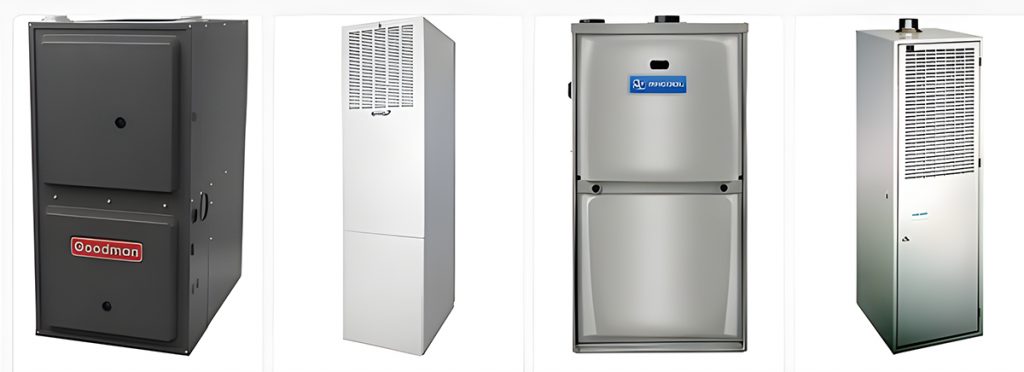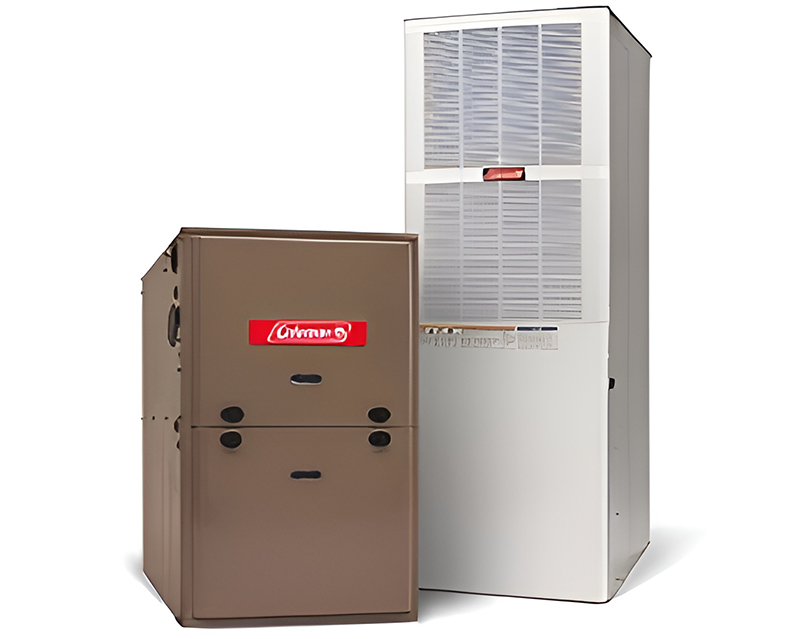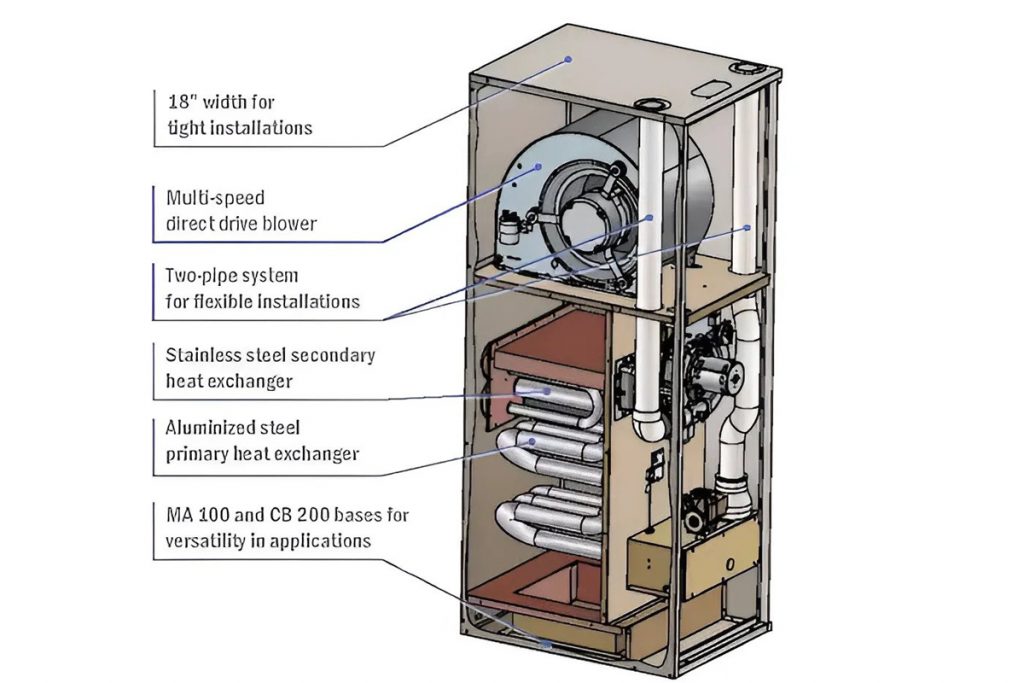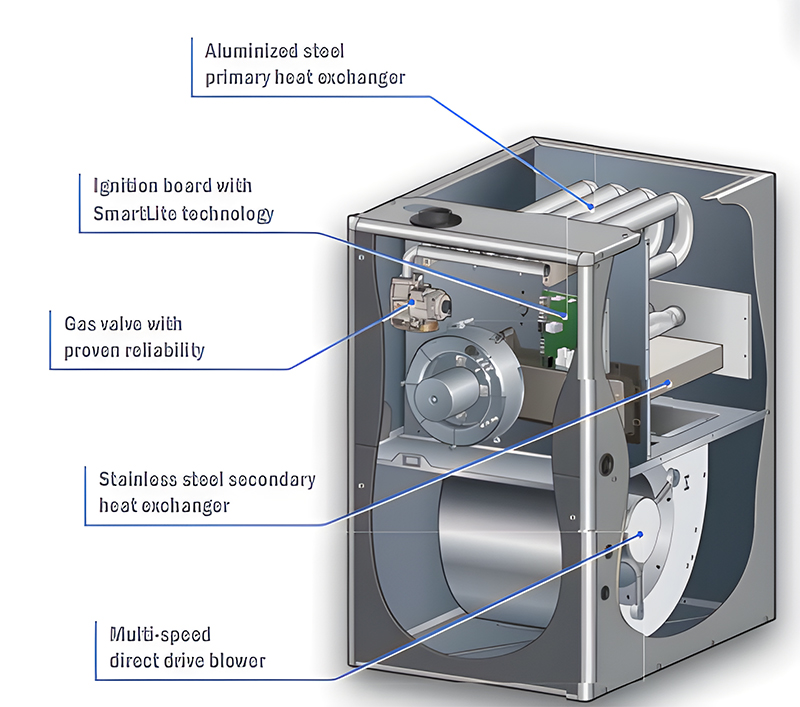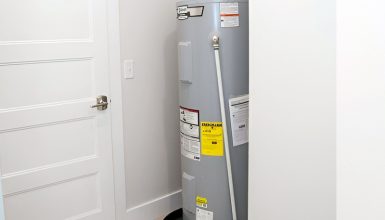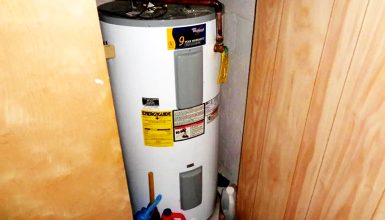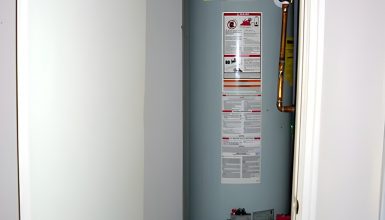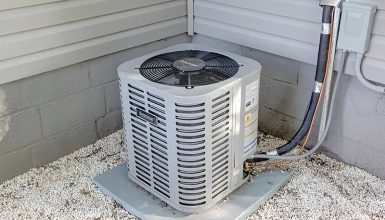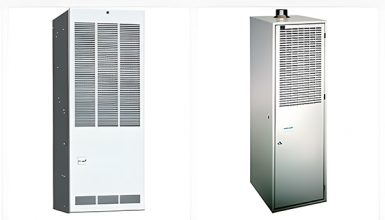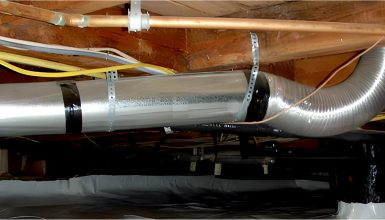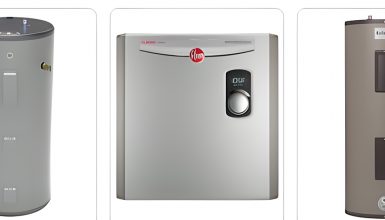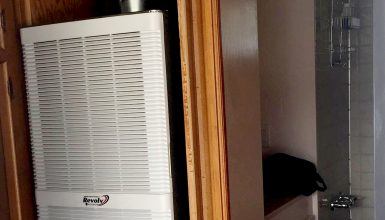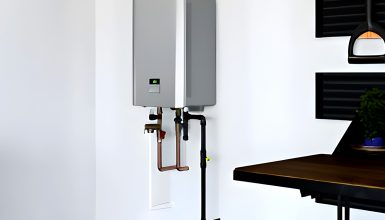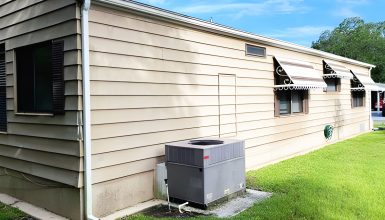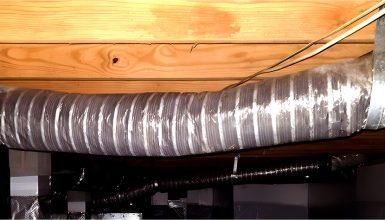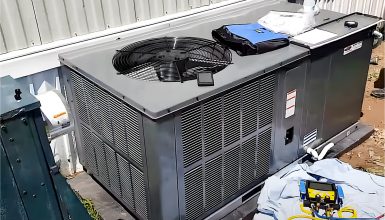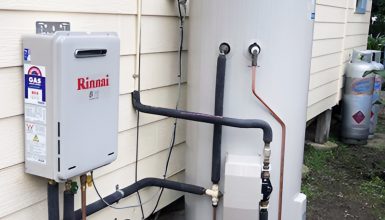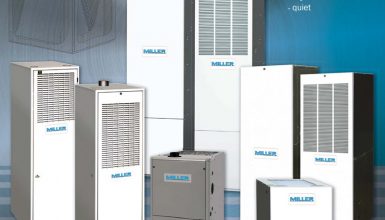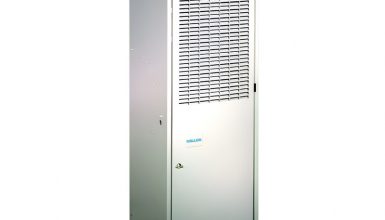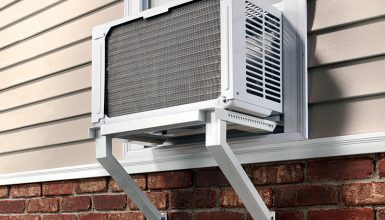A mobile home furnace is a heating system specifically designed to fit in the limited space of a mobile home. Unlike traditional furnaces, mobile home furnaces are smaller and more compact, making them the perfect option for you to live in mobile homes.
In this guide, we’ll dive deeper into the specifics of mobile home furnaces. So you can better understand how they work and why they’re crucial for mobile home living. Let’s get started!
Why Do Mobile Homes Need a Special Furnace?
Mobile homes need a special furnace because they’re built differently. Their design, size, and ventilation make standard furnaces a poor fit. Below are key reasons why these homes require a unique heating solution.
1. Size and Space Constraints
Mobile homes are snug. They often have small closets or hallways for the furnace. A regular furnace would take up too much room. That’s why mobile home furnaces are compact.
2. Ductwork and Ventilation
These homes have narrow ducts and special airflow needs. A typical furnace could struggle to push air through smaller vents. Mobile home furnaces move air efficiently through these tighter pathways.
3. Installation and Configuration
Mobile homes often use a downflow system. The furnace sends warm air downward. Regular furnaces usually blow air up or sideways. A mobile home furnace is designed to fit these vertical setups.
4. Safety Regulations
Rules for mobile homes call for extra care. There’s not much space between walls and heating units. Special furnaces meet strict standards to reduce fire risks. They also have proper vents for safe operation.
5. Energy Efficiency
Heating a smaller space can be tricky. A furnace made for a larger home could waste energy. Mobile home furnaces run efficiently. They keep you warm without hiking up the bills.
Types of Mobile Home Furnaces
What kind of furnace do you need for a mobile home? There are three main types: electric, gas, and oil furnace. Each type has advantages and disadvantages, and it’s essential to consider them when choosing a furnace for your mobile home.
1. Electric Furnaces
Electric furnaces are powered by electricity and use heating elements to warm the air. They are typically less expensive to purchase and install than gas or oil furnaces and require less maintenance. Electric furnaces also have a long lifespan and are very safe to operate, as they don’t produce harmful byproducts. However, they can be more expensive to work in the long run, as electricity is generally more expensive than gas or oil.
2. Gas Furnaces
On the other hand, gas furnaces use natural gas or propane to generate heat. They are known for their energy efficiency and can save you money on your energy bills in the long run. Also, these furnaces heat your home quickly and efficiently and can operate even during a power outage. However, they can be more expensive to purchase and install than electric furnaces. And require more maintenance to ensure safe operation. Also, require a gas line connection and proper venting.
3. Oil Furnaces
Oil furnaces use heating oil to generate heat and are typically more efficient than electric furnaces. They are also reliable and can continue operating even during a power outage. However, they are generally more expensive to operate than gas or electric furnaces, as heating oil is more expensive than natural gas or electricity. Additionally, oil furnaces require more maintenance than electric ones and can be more costly if something goes wrong. They can be a good option in areas where natural gas and propane are not readily available.
4. Heat Pumps
Heat pumps are not traditional furnaces, but they can provide heating and cooling for mobile homes. They work by transferring heat from the outside air (air-source heat pump) or the ground (ground-source or geothermal heat pump) to the inside of the home. Heat pumps are energy-efficient and can be an excellent option for mobile homes in moderate climates.
Furnace for a 1500-Square-Foot Mobile Home
DetermiWondering how big a furnace you need for your 1,500-square-foot mobile home? It depends on factors like insulation, climate, and the layout of your space. Still, there’s a quick way to get a rough idea:
- Figure out how many BTUs per square foot you need. Warmer areas might need only 25 BTUs. Colder regions could require up to 60 BTUs.
- Multiply that BTU number by your home’s square footage. For instance, if you need 35 BTUs per square foot and your home is 1,500 square feet, you’d want about 52,500 BTUs (35 x 1,500).
That number gives you a ballpark figure for your furnace’s heat output. But remember, this is just an estimate. For precise sizing, schedule a professional load calculation. This ensures you pick a furnace that keeps your home comfortable and efficient.
Factors to Consider When Choosing a Mobile Home Furnace
Choosing the right furnace for your mobile home can feel overwhelming. But don’t worry. You can find the best fit for your budget and space by focusing on a few key points. Below are the main factors to keep in mind.
1. Mobile Home Size
Start by measuring your home’s square footage. A furnace that’s too small won’t keep you warm. A furnace that’s too big will waste energy. Check your insulation too. Good insulation holds in heat and lets you use a smaller furnace. Poor insulation may require a bigger unit to stay cozy.
2. Energy Efficiency
Look for a high AFUE rating. This rating shows how much fuel the furnace turns into heat. For example, a 90% AFUE rating means 90% of the fuel becomes warmth. The rest vents outside. Higher AFUE ratings can lower your heating bills, though these furnaces may cost more upfront.
3. Fuel Type
Pick a fuel that fits your area and budget. Common choices include natural gas, propane, oil, or electricity. Gas and propane tend to be more energy-efficient. Oil is an option in places where gas lines aren’t available. Electricity can be simpler to install but may lead to higher monthly bills.
4. Climate
Think about how cold it gets. If you live in a chilly region, choose a furnace with a higher heating capacity. A heat pump might work well in milder climates since it can heat and cool your home.
5. Ventilation and Air Quality
Your furnace must vent correctly. It also needs a steady air supply for safe combustion. These features help maintain clean indoor air and protect you from carbon monoxide risks.
6. Noise Level
Furnaces can rumble and vibrate. If you want a quieter home, look for units with sound-dampening cabinets or sealed combustion chambers. Variable-speed blower motors also help reduce noise.
7. Installation and Maintenance
Some furnaces are easier to install than others. Keep an eye on ongoing maintenance needs, too. Frequent service visits can add costs over time. Make sure you choose a model you can maintain without breaking the bank.
8. Cost
The budget isn’t just about the furnace itself. You’ll need to factor in installation and energy bills. A higher-efficiency furnace may cost more at first but can save you money in the long run.
You’ll be on your way to a warm and comfortable mobile home by weighing all these points.
Installation of Mobile Home Furnaces
Installing a furnace in a mobile home can be challenging. It’s often best to hire a licensed professional. But if you want a general idea of the process, here’s a simple overview:
1. Check Local Codes
First, learn your area’s rules. Mobile homes often have specific installation regulations. Make sure you follow them to stay safe and compliant.
2. Gather Tools and Materials
Have all parts ready, including the furnace, venting, and required connectors. You’ll also need tools like a level, wrenches, and a drill.
3. Remove the Old Furnace (If Needed)
Turn off the power supply and fuel source. Carefully disconnect the old unit. Dispose of it according to local guidelines.
4. Measure the Space
Check the width and height of the furnace area. Make sure the new furnace will fit with enough clearance for airflow and maintenance.
5. Position the New Furnace
Slide the furnace into place. Keep it level to ensure proper operation. Follow the manufacturer’s instructions for anchoring and securing.
6. Connect Fuel and Venting
Hook up the gas line or power source according to the code. Attach the vent pipes and make sure they’re sealed. This step is vital for safe airflow.
7. Install Ductwork
Align the furnace with your home’s ducts. Seal any gaps or cracks to prevent leaks and boost efficiency.
8. Check Electrical Connections
Connect the wiring as the manual directs if it’s an electric furnace. Always turn off your breaker before touching wires.
9. Test the System
Turn the power and fuel back on. Run the furnace for a short period. Listen for odd sounds and watch for any error codes.
10. Final Inspection
Ask an HVAC pro or local inspector to review your work. A professional sign-off confirms that your system is safe and meets the code.
Remember, these steps provide a general guideline. Furnace installation can be complicated, and mistakes pose serious safety risks. When in doubt, contact a professional HVAC technician to handle the job.
Mobile Home Furnace Maintenance
Regular mRegular checkups keep your mobile home furnace working at its best. They also help it last longer. You can handle some tasks yourself. However, hiring a technician each year is wise for inspecting your furnace thoroughly. Here are the basics:
1. Clean or Replace the Air Filter
A dirty filter clogs airflow. This reduces efficiency and strains the furnace. Check it every month or so. Clean or replace it as needed.
2. Inspect the Blower Motor and Fan
Look for debris or damage. Clean the fan blades if they look dusty. Some motors need oil. Check your manual to see if lubrication is required.
3. Check the Belts
Cracked or frayed belts can break. Replace them right away. This ensures smooth operation.
4. Examine Vents and Ductwork
Watch for leaks or blockages. Seal any leaks with duct tape or mastic. Make sure nothing is blocking the vents.
5 Clean the Burners
If you have a gas or oil furnace, look for soot or debris on the burners. Clean them as needed. This step keeps combustion safe and efficient.
6. Check the Ignition and Pilot Light
Make sure the spark or pilot light is strong. Clean the pilot orifice if it’s dirty. A weak pilot can cause big problems.
7. Inspect the Heat Exchanger
Cracks or rust can lead to carbon monoxide leaks. Call a pro if you spot any damage.
8. Verify Safety Devices
Flame sensors, pressure switches, and limit switches protect you. Make sure they’re all working correctly.
9. Inspect the Venting System
Blockages or corrosion can push harmful gases back into your home. Keep vents clear and replace damaged parts.
10. Test the Thermostat
Ensure it turns the furnace on and off at the correct temperature. A faulty thermostat wastes energy.
In addition to these steps, schedule a yearly visit from an HVAC professional. They’ll clean and inspect internal parts, spot hidden issues, and confirm your furnace is safe and efficient.
Quietest Furnace for a Mobile Home
Looking for a quiet furnace for your mobile home? Focus on models with noise-reducing features and efficient performance. No single brand is always the quietest, but here are a few things to keep in mind:
1. Insulation
A furnace with an insulated cabinet cuts down on noise. Look for models with sound-dampening materials or thicker walls.
2. Variable-Speed or Multi-Speed Motors
These motors run at lower speeds when heat demand is light. That means less noise than a single-speed blower.
3. Sealed Combustion
A sealed chamber pulls air from outside. This design keeps the combustion process separate from your living areas. It also lowers noise levels.
4. Size and Capacity
Choose a furnace that’s just the right size. An oversized furnace cycles on and off more often, making more noise. A properly sized furnace runs smoothly and quietly.

